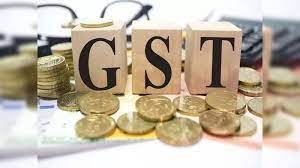Strong Growth in GST Collections: December 2023 Records ₹1.65 Lakh Crore
The Goods and Services Tax (GST) collections for December 2023 marked a significant upsurge, hitting a record high of ₹1.65 lakh crore. This notable increase, attributed to various factors, reflects a positive trend in the economy’s recovery post-pandemic. The surge in collections is a testament to the government’s consistent efforts and fiscal policies aimed at enhancing tax compliance and streamlining the GST framework.
This remarkable achievement is indicative of the gradual economic resurgence, showcasing robust consumer spending, improved business activities, and a resurgence in trade. It also underscores the effectiveness of measures undertaken to curb tax evasion and promote tax transparency within the GST regime.

Why this News is important:
Economic Recovery and Fiscal Indicators
The spike in GST collections serves as a pivotal indicator of the nation’s economic recovery trajectory. It denotes increased consumer confidence, heightened industrial production, and amplified economic activities across sectors.
Government Policy Impact on Tax Compliance
The surge reflects positively on the government’s policies aimed at simplifying tax structures and promoting compliance. Such growth in collections indicates a reduction in tax evasion and an uptick in adherence to GST norms.
Implications for Government Expenditure and Development Projects
Increased revenue from GST will likely augment the government’s financial capabilities, potentially leading to amplified spending on infrastructure, social welfare schemes, and developmental projects.
Historical context:
The Goods and Services Tax (GST), implemented on July 1, 2017, aimed to replace multiple indirect taxes with a single, unified tax structure. Its implementation streamlined the taxation system and aimed to curb tax evasion, ensuring a transparent and simplified tax regime.
Key Takeaways from “Strong Growth in GST Collections: December 2023 Records ₹1.65 Lakh Crore”
| Serial Number | Key Takeaway |
|---|---|
| 1. | December 2023 saw a record high in GST collections, reaching ₹1.65 lakh crore. |
| 2. | This surge indicates a positive trend in economic recovery post-pandemic. |
| 3. | Government policies aimed at enhancing tax compliance have shown effectiveness. |
| 4. | Increased GST collections could potentially boost government spending on development projects. |
| 5. | GST, introduced in 2017, aimed to streamline taxation and reduce tax evasion |
Important FAQs for Students from this News
1. How does the surge in GST collections impact the economy?
- The surge indicates economic recovery, showcasing increased consumer spending and business activities, potentially leading to enhanced government spending on development projects.
2. What factors contributed to the record-high GST collections in December 2023?
- Various factors, such as improved tax compliance due to government policies, increased consumer confidence, and amplified economic activities, contributed to this surge.
3. How does the GST regime aim to streamline taxation?
- GST aimed to replace multiple indirect taxes with a single unified tax, simplifying the taxation system and reducing tax evasion by ensuring transparency.
4. Why are GST collections considered a significant fiscal indicator?
- They reflect the effectiveness of government policies, highlighting reduced tax evasion and increased adherence to GST norms, indicating a positive trend in economic recovery.
5. What impact might the increased revenue from GST have on government expenditure?
- The increased revenue could potentially augment government spending on infrastructure, social welfare schemes, and developmental projects, fostering economic growth.
Some Important Current Affairs Links















